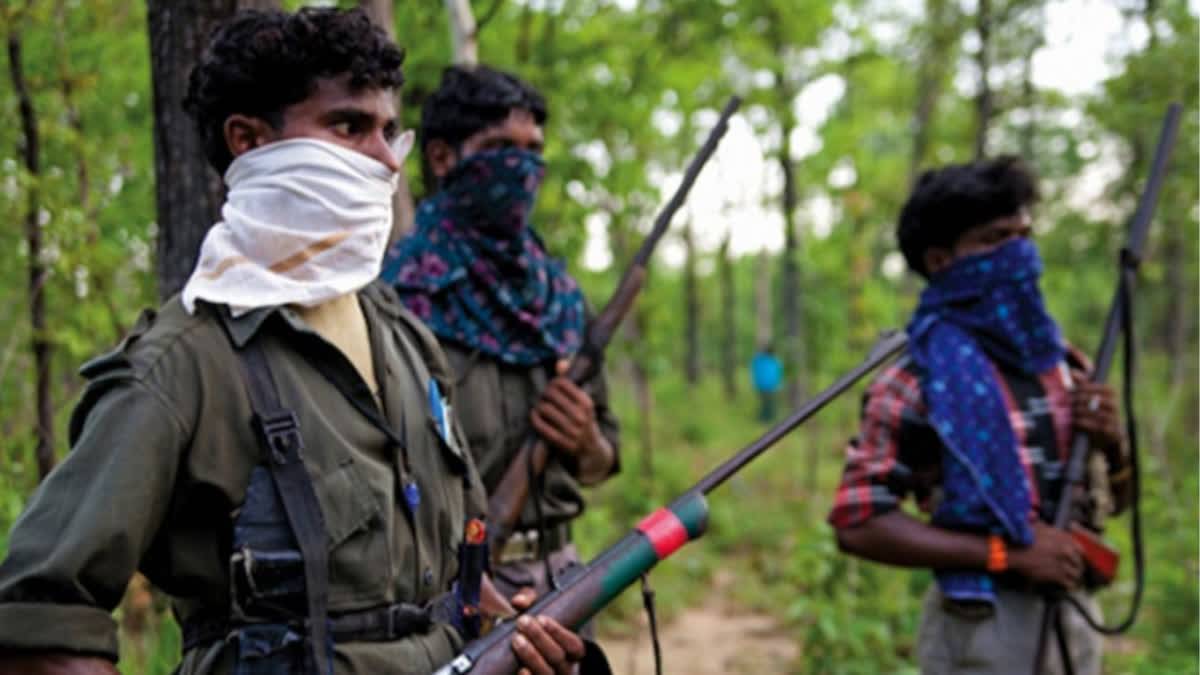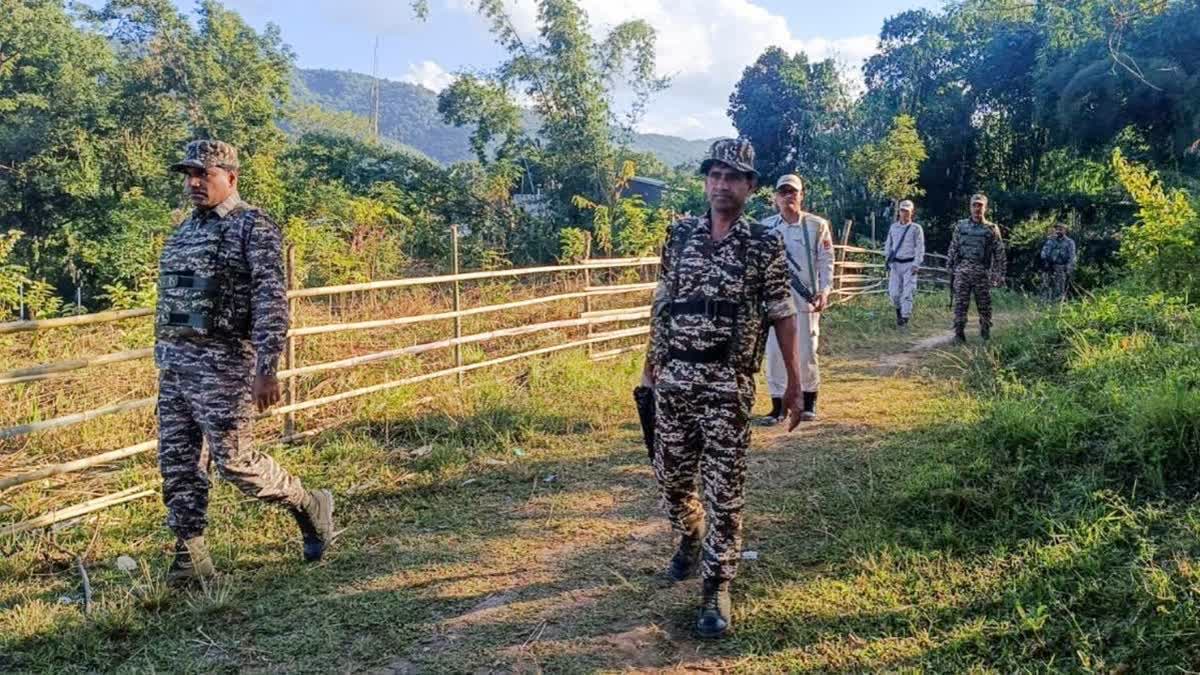New Delhi: Even as the Ministry of Home Affairs (MHA) is all set for the final blow to eliminate the Naxalite menace by March 2026, a renowned security expert on Tuesday emphasized a coordinated approach comprising security forces as well as the political will.
"Setting a target to eliminate Naxalism from the country is most welcome. However, what we need is a coordinated approach between the central and state governments in addition to political will," Prakash Singh, former director general of Border Security Force (BSF) told ETV Bharat.
In line with Home Minister Amit Shah's recent commitment to end Naxalism by the first three months of 2026, the Centre has extended two of its most crucial schemes — Special Infrastructure Scheme (SIS) and Special Central Assistance (SCA) up to March 2026.
According to government statistics accessed by ETV Bharat, the SIS scheme has been extended with an overall outlay of Rs 1,160 crore. Stating that there has been a significant reduction both in Left-Wing Extremism (LWE)-affected geographies and violence, the home ministry has directed state police to bridge the remnant security vacuums, ensure comprehensive investigations, closely monitor prosecution and choke finance streams.
"In mission against LWE, the MHA is fighting a successful battle with a strategy on all three fronts of development, prosecution, and operation," a senior MHA official, engaged in the anti-Naxal operation, said.
Going ahead, the government has extended the SIS scheme till March 31, 2026, with an overall outlay of 1,160 crore. Approved in 2017, the scheme is being implemented for strengthening the State Intelligence Branches (SIBs) and special forces of Naxalsim-affected states as well as fortification of 250 police stations at Rs 2.5 crore each.
An amount of Rs 991 crore including Rs 371 for special forces and special intelligence branches in 10 states and Rs 620 for fortified police stations in seven states has been approved by the government. While Rs 364.6 crore has been released to states under the scheme since 2017-18 and construction of 206 FPSs has been completed up to March 2024.
In addition, the government has also extended special central assistance (SCA) for the most LWE-affected districts till March 2026. This subscheme, under the umbrella Modernisation of Police Forces scheme, was approved in 2017.
"Under the scheme, funds are provided to the states to fill critical gaps in public infrastructure and services in the most LWE-affected districts. Presently, there are 25 most LWE-affected districts across eight states and till now Rs 3450 crore have been released under the scheme. The effective coordination with and within states, central forces and agencies filled the security vacuum by accelerated opening of security camps, optimisation by focused deployment of resources, enhanced allocations, financial choking of Maoists, creation of separate vertical in NIA for LWE-related cases for quality prosecution and special focus on neutralisation of top LWE leadership etc. have yielded significant achievements both in terms of sharp reduction in LWE related incidents and constriction of LWE geographical spread," the official said.
An overall 48 per cent reduction in violent incidents (from 1,136 to 594) and a 65 per cent reduction (from 397 to 138) in the resultant deaths of civilians and security forces in LWE violence has been observed in 2023 against 2013.
According to an annual report of MHA, Chhattisgarh remained the worst affected state with 63 per cent of the total LWE-related violence incidents and 66 per cent of the resultant deaths in 2023. "The Union and Chhattisgarh government will bring a comprehensive scheme for the overall development of people affected by LWE within three months," the official said.
Jharkhand followed Chhattisgarh with 27 per cent of the LWE-related incidents and 23 per cent of the resultant deaths. The remaining incidents of violence and deaths are reported from Maharashtra, Odisha, Madhya Pradesh, Bihar and Kerala.
Government data revealed that the geographical spread of LWE violence has also been shrinking considerably. "The area of Naxlaite activities has been considerably restricted with just 25 districts accounting for 91 per cent of the extremism," the data said.
The resolute implementation of the policy resulted in a considerable decline in violence and constriction of geographical spread. LWE incidents have reduced by 73 per cent in 2023 in comparison to the high levels of 2010. The death count (civilians and security forces) has also decreased by 86 per cent during the same period.
Till June 2024, there has been a sharp decline, of 32 per cent, in such incidents and deaths have come down by 17 per cent compared to the corresponding period of 2023.

Naxal-infested States and Districts
Alluri Sitaramraju district in Andhra Pradesh; Bastar, Bijapur, Dantewada, Dhamtari, Gariyaband, Kanker, Kondagaon, Mahasamund, Narayanpur, Rajnandgaon, Mohalla-Manpur-Ambagarh Chowki, Khairgarh-ChhuikhadanGandai, Sukma, Kabirdham, Mungeli in Chhattisgarh; Giridih, Gumla, Latehar, Lohardaga, West Singhbhum in Jharkhand; Wayanad and Kannur in Kerala; Balaghat and Mandla of Madhya Pradesh; Gadchiroli, Gondia and Dindori in Maharashtra; Kalahandi, Kandhamal, Bolangir, Malkangiri, Nabrangpur, Nuapada and Rayagada in Odisha; Bhadradri-Kothagudem, Mulugu in Telangana and Jhargram in West Bengal are still counted as Naxal-infested.
Strengthening the Intelligence Mechanism
To counter the growing challenge of LWE activities, several measures have been taken to strengthen and upgrade the capabilities of intelligence agencies at the central and state levels. This includes round-the-clock intelligence sharing through Multi Agency Centre (MAC) at the central level and State Multi Agency Centre (SMAC) at the state level, setting up of joint command and control centre at Jagdalpur and Gaya, strengthening of technical and human intelligence, better coordination among the security forces, district police and intelligence agencies, thrust on the generation of real-time intelligence and creation as well as strengthening of State Intelligence Bureaus (SIBs) in the LWE-affected states for which central assistance is provided through the SIS.
Better Inter-State coordination
The area of operations of CPI (Maoist) cadres is spread over several states. Therefore, improved interstate coordination is essential. The Centre has taken a number of steps to enhance interstate meetings and interactions between the bordering districts.
Tackling the problem of Improvised Explosive Devices (IEDs)
The majority of casualties to security forces in anti-Naxalite operations are caused by IEDs and MHA continues to support extensive counter-IED capacity building of CAPFs and state police forces. It has issued a Standard Operating Procedure (SOP) on 'Issues Related to Explosives/IEDs/Landmines in LWE Affected Areas' to promote best practices in IED management. The ministry has raised 53 India Reserve Battalions and Special India Reserve Battalion for 10 LWE-affected states from a total sanctioned battalion of 67.
Coordinated Approach
Welcoming the government's approach, Singh said, "Setting up the target of March 2026, the government is approaching accordingly and directing the CAPF to take action." However, he said there should not be a particular timeline on the issue given the fact that innocent civilians may also be targeted during the anti-naxal operations.
"Several innocent people may have lost their lives in the hands of security personnel. On many occasions, people involved in other crimes may also be targeted as Naxals," Singh said.
Asserting that the issue of Naxalism is connected also to the civil society in the country, Singh said, "The government should eliminate differences in the society. We need to tackle the issue politically as well. At the same time, we need to look after the land reforms issue and economic upliftment of the affected people," he said.
Also Read:



